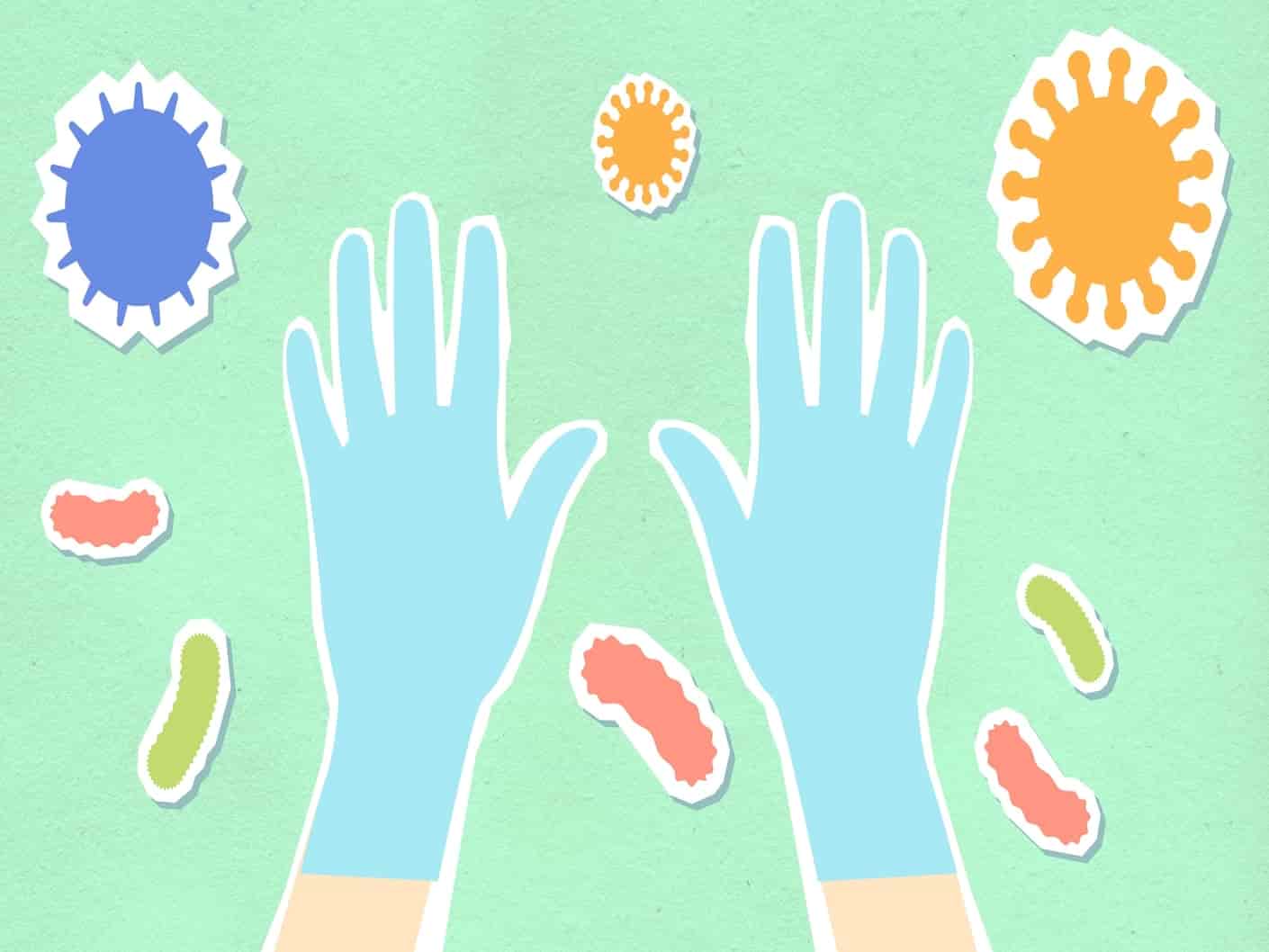Bacteria and fungi are examples of microorganisms that have the potential to cause illness in humans.
Although microorganisms can be found just about anywhere on or in the human body, some pose a greater health risk than others. Bacteria and fungi are examples of microscopic organisms that can cause disease and damage the skin and body. It can be challenging to tell the symptoms of a bacterial infection from those caused by a fungal infection without having proper diagnostic tools. Still, individuals need to recognize the signs of both. This information may help provide insight into the causes of certain infections and may save lives.
What are fungi and bacteria?
Fungi and bacteria are both microorganisms, but they have different characteristics.
Bacteria: Bacteria are single-celled organisms that live in almost every environment on Earth. They range from less than 1 micrometer to more than 2 millimeters, but most bacteria are visible only under a microscope. Bacteria are prokaryotes, meaning they do not have a nucleus or membrane-bound organelles, such as mitochondria or chloroplasts. They reproduce by binary fission, the process of splitting in half to create two new cells.
Fungi: Fungi are eukaryotic organisms that lack chlorophyll. Thus, they cannot photosynthesize their food by using light energy from the sun as plants do; instead, they obtain nutrients from other living organisms. Many fungi grow on decomposing organic matter, but some species form symbiotic relationships with plants or animals. Examples include lichens (fungi with algae), mushrooms (fruiting bodies of fungi), moulds (a fungus growing at room temperature) and yeasts (single-celled fungi).
Are bacteria and fungi decomposers?
Yes, bacteria and fungi are decomposers. They feed on dead organic matter and release carbon dioxide into the atmosphere.
What do bacteria and fungi have in common?
Bacteria and fungi are both classified as eukaryotic, prokaryotic and single-celled organisms. Eukaryotic means the cell has a nucleus and contains DNA. Prokaryotic means the cell is smaller and contains no nucleus. Single-celled organisms have only one cell, while multicellular organisms have many cells.
Both fungi and bacteria are microscopic, living things that can’t be seen without a microscope. Fungi grow in colonies — like mould — while bacteria can be solitary or form chains. Bacteria live in watery places like ponds, lakes and soil; fungi thrive on dead plants and animals. Both are beneficial to humans because they help break down waste materials into nutrients for plants to use for food production.
Are fungi and bacteria producers?
Yes, fungi and bacteria are producers. The producers are the organisms that make their food through photosynthesis. They use energy from the sun to convert carbon dioxide into glucose and oxygen.
Fungi and bacteria are not photosynthetic, but they have a role in the ecosystem by breaking down dead organic matter into simple sugars for plants to use as food.
Bacteria and fungi are examples of
Bacteria and fungi are examples of prokaryotic organisms or organisms with no nucleus.
Prokaryotes, or prokaryotic cells, lack a membrane-enclosed nucleus, and they reproduce by binary fission. A prokaryote cell consists of cytoplasm (the fluid within the cell) and ribosomes (protein-making structures).
Bacteria are single-celled microorganisms that can be found in water and soil. They can also cause diseases like cholera, typhoid fever, bubonic plague and anthrax.
Fungi are single-celled or multicellular organisms similar to plants but lack the chlorophyll necessary for photosynthesis. Examples include mushrooms, yeasts and moulds.
Prokaryotic organisms do not have a nucleus, while eukaryotic cells do have a nucleus.
Symptoms of a bacterial infection
Many different types of bacteria can cause disease. Most of the time, they only cause mild illness or no symptoms at all.
When you get a bacterial infection, it usually starts with fever, pain and other symptoms that make you feel sick.
Most bacterial infections cause the same symptoms. They include:
- Fever: An increase in body temperature.
- Chills: Shivering or shaking because you’re cold.
- Sore throat: Painful swallowing and difficulty swallowing.
- Coughing, sneezing and runny nose: These are signs that your airways are irritated by the infection, and mucus is being produced to help clear it out of your throat and nose.
- Diarrhea or constipation (poop): Diarrhea may be bloody if there’s blood in your digestive system; constipation may be accompanied by hard, dry stools (the opposite of diarrhea).
- Vomiting and nausea (throwing up): Nausea often comes before vomiting, but sometimes it happens afterwards. It’s common for both to happen at the same time as well.
Symptoms of a fungal infection
Fungal infections can occur anywhere on the body, including the feet. The most common fungal infection of the foot is the athlete’s foot, but other types of fungal infections can affect your feet.
Common symptoms of a fungal infection include:
- Itching and burning sensation
- Redness or swelling
- Cracking, flaking or peeling skin
- Painful blisters and sores
Final Words – Bacteria and fungi are examples of
Both bacterial and fungal infections are caused by microscopic organisms that can be found just about anywhere on the human body. Bacterial infections may give off symptoms like skin lesions, irritations, and infections around the eyes, nose, mouth, and throat. Fungal infections can cause skin lesions, but they may also lead to mucosal infections in the oral cavity and genital areas.
Learn more about health news from emaemj
